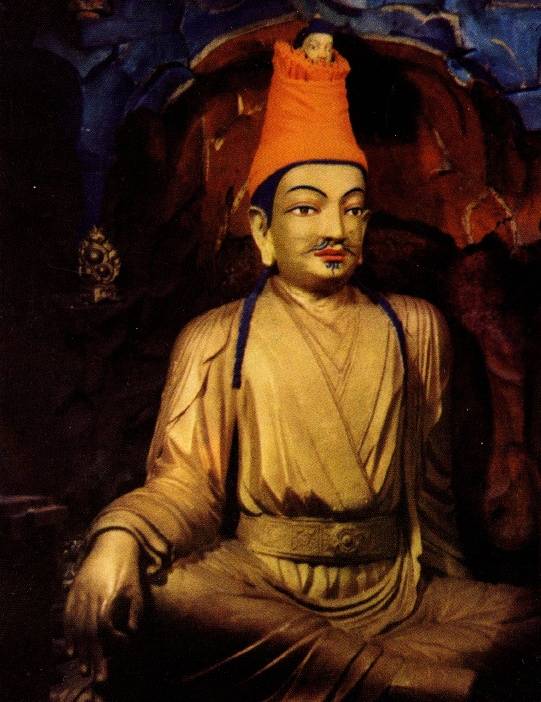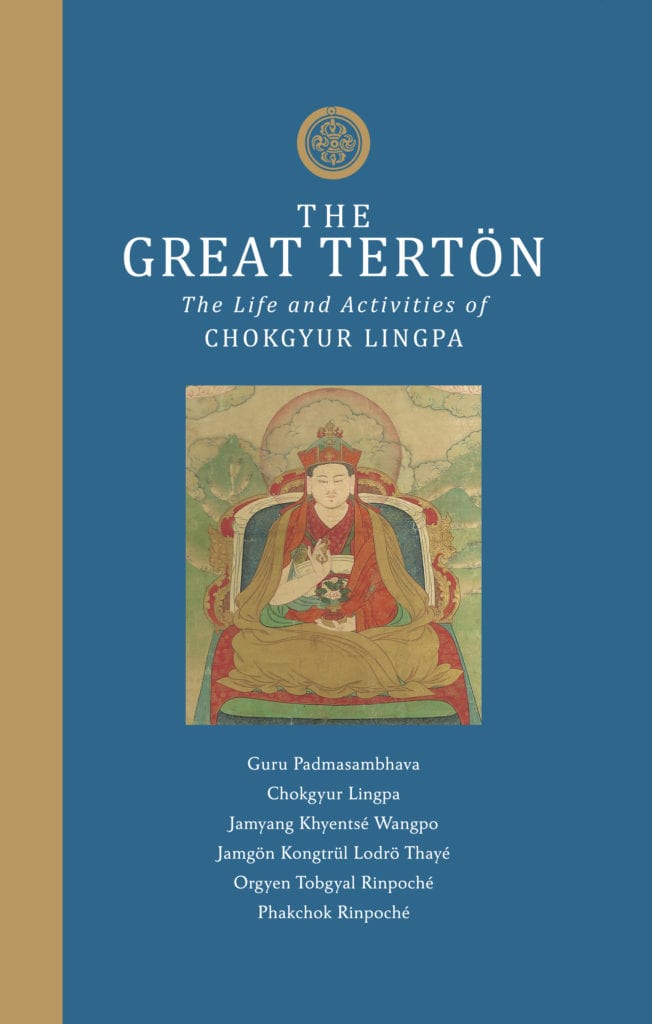Societal Human Values Series # 1

Tibetan Emperor Songtsen Gampo, (Srong-brtsan-sgam-po, reigned 629-650 CE. ), among his many achievements, promoted a moral code known as the Sixteen Principles of Societal Human Values (michö tsangma chudruk). As the Dalai Lama’s translator, Thupten Jinpa writes, “Most of these sixteen values have to do with promoting greater societal well-being and living one’s life with dignity, honesty and respect for others.”
Phakchok Rinpoche frequently emphasizes the importance of living respectfully in society. In his January 2020 Guru Rinpoche day message (link here), he explains that Dharma practitioners need a strong foundation of human values. He encourages students to memorize and to internalize these points of conduct as a core foundation for our practice of the Dharma. If we don’t hold this moral code well, then whatever higher practices we engage in will be unlikely to bear much fruit.
This is the first in a series of explanations of the Sixteen Principles of Societal Human Values.
Principle # 1: Cultivate devotion to the three jewels of Buddha, Dharma, and Sangha (lha dkon mchog gsum la mos gus bskyed pa).
What do we mean by the term “devotion”? This is the most common translation of the Tibetan term “mögü (mos gus) which can also be expressed as “respect,” “interest,” or “admiration.” The late great Sakya master, H.E. Chogye Trichen Rinpoche (1920-2007) explained that the Tibetan term combines two words, “mos pa” meaning “to be devoted to,” and “gus pa”, which signifies “respectful reverence.” Alternatively we can also see mos pa used in the sense of turning one’s attention to one particular thing–in this case, the three jewels.

In his treatise the Abhidharmasamuccaya, the 4th century Indian master Asanga expresses the meaning of mögü as “It holds an ascertained thing to be just the way it has been ascertained. It has the function of non-captivation.” By this, we can understand that we have developed a decisive interest. And in Tibet, Benkar Jampal Zangpo, the main teacher of the seventh Karmapa, wrote the often-quoted line in the Vajradhara prayer, “Devotion is the head of meditation.” We need devotion in order to follow through with our practice of the Dharma–so in this way it is the “head.” After all, if we have doubts and lack of interest, we won’t meditate, will we?
In its fullest meaning devotion carries a sense of clear confidence or conviction that we see something correctly. We value something because it deserves our attention. According to classical texts, if we cultivate devotion and faith we “leap forward” on the path because we trust that we are on the correct path. Therefore we can progress very quickly and with fewer obstacles.
Devotion and Faith
Faith comes first in a list of positive or virtuous mental factors according to Abhidharma texts. It is essential at the beginning of our path because once we develop faith, we practice with confidence and determination. A mental state based upon confidence or faith allows for mental peace to unfold.
Gradual Cultivation
Notice that this first point of conduct begins with the word, “cultivate.” At first we may be drawn to the smile of the Buddha, or his serenity when we see images. Or we may enter a temple or sacred space and feel a certain emotion that we have never experienced. We are attracted and long for something we are missing.

The vocabulary of “cultivation” indicates that we give ourselves time to develop trust–we’re allowing something to grow and blossom naturally. All the masters tell us that most of us progress gradually and that our devotion becomes more solid and unshakeable as we experience the results of our own practice. Cultivation also implies effort; we need to expend energy to see results. Frequently we use the example of a farmer planting a crop. Before she can grow beautiful flowers or vegetables, she must first break up the hard earth and make it soft, moist and workable. And she has to keep returning to tend the crop. She must add water and fertilizer and then from time to time she needs to weed to give the sprouts space to grow. She also may erect a fence to keep the tender shoots safe.
When we start out, we need some confidence that the teachings we hear will bring benefit. If we don’t develop that level of appreciation, then we won’t have much incentive to practice. But if we don’t practice, we will tend to hold on to doubts or hopes and fears instead of developing solid conviction. This is not so different than our farmer or gardener example if we think about it carefully. The farmer or gardener wouldn’t work so diligently unless she had some expectation and conviction that her efforts will result in something beautiful to see or tasty to eat. Similarly, the practitioner needs to trust that following the path taught by the Buddha will lead to good results.

Natural Development
We can’t expect to have unshakable or sincere devotion as we begin. For most of us it does take time, so give yourself some space to let it develop naturally. Don’t worry if you feel like you are “faking it” in the beginning. But allow for the possibility and the opportunity for growth that comes with practice. Phakhok Rinpoche often suggests that we inspire ourselves by reading life stories of recent or historical masters, and by visiting sacred sites. And if we can’t physically visit places of pilgrimage, we can travel as armchair tourists by reading accounts of these special lands written by spiritual adepts. These stories can arouse feelings of greater interest and encourage us to undertake a spiritual journey ourselves.

Medical Metaphors
We often describe the Buddhdharma with medical metaphors. The Buddha and the teachers fill the role of skilled physicians, the dharma is the medicine, and the sangha are those who help care for us as we take treatment. Just as we would need to trust the doctor before deciding to follow his advice and treatment plan, we similarly begin with a sense of trust that the Buddha’s teachings we have heard seem to make sense.
Trust

Similarly, in the famous text, The Questions of King Milinda, Milinda Pañha, the monk Nāgasena instructs the historical Bactrian (Indo-Greek) king Menander about the purpose of faith. He uses the example of a crowd trapped on the banks of a suddenly raging river where a landslide threatens their existence. The people are afraid to cross until a brave and strong man, confident in his ability, shows the way forth by vaulting the river. Once the people see the man safe on the other bank, they too pluck up their resolve and make the leap across. Here we see the literal illustration of a “leap of faith”–we need to believe that the journey is possible and promises great results.
Three Types of Faith
Typically, we divide faith into three types:
- Admiring faith–seeing the value of the three jewels, which is this first point of ethical conduct.
- Longing or wishing faith–giving rise to the desire to be free of suffering and to attain awakening.
- Trusting faith–firm conviction and full reliance on the Dharma based upon personal experience.
Progressive Development

We can see these three develop in a natural progression. First, we respect, admire and appreciate the Buddha, Dharma, and Sangha because we see them as positive influences. And we respect what they represent. We see them as a positive influence and a source of goodness. As we explore more, we discover more of the positive qualities and understand that we can follow the Dharma taught by the Buddha in order to achieve the same result. We then wish to put teachings into practice and we rely on the help and support of the sangha.
As we study, reflect and meditate, our devotion to the three jewels becomes truly stable. We experience for ourselves the truth of the teachings and at that point we naturally feel devotion from the depths of our hearts. And at that point, we are capable of receiving blessings.
Rigdzin Jigmé Lingpa, in The Cuckoo’s Call: A Guide to Glorious Samye Chimphu, explains the key role of faith:
“Developing faith at the outset
Secures and increases all good qualities.
It clears away doubts and frees us
From the river of suffering.
Faith is like a citadel of happiness and goodness.
It helps the mind to settle and grow lucid.
Eliminating pride, it is the source of devotion.
Faith is the greatest of riches, supports, and resources,
Like a hand it collects and gathers up the roots of virtue.
If faith is lacking, virtuous states will not develop and certainty will not arise. This will inhibit the suffusion of blessings. Therefore, generate faith above all else!”
Pema Jungne Translations, 2017
How to Cultivate Devotion
As beginners, we can read the life story of the Buddha in order to understand his awakening and his teaching. A beautiful and poetic version is found in the Lalitavistara, “The Play in Full.” As we do this, we can reflect on the messages contained within his living example. When we read a text like this, we can immerse ourselves in the story slowly, taking time to appreciate the qualities of the Buddha and the Dharma that are described.
We can also practice chanting the Treasury of Blessings, a profound meditation on the Buddha written by the master Mipham Rinpoche. You can follow along with our video visualization to help feel the presence of the Buddha.
When we read the life stories of the Buddha and other great masters, this helps us to light the fire of devotion. Life stories are known as namtars, or “stories of liberation” and they inspire us by describing how those who follow the Dharma achieved great realization and awakening. We develop greater confidence that the path leads to authentic results.
Please Share With Us
How do you maintain and increase your devotion? What helps inspire you most and makes you confident about your practice?










Responses